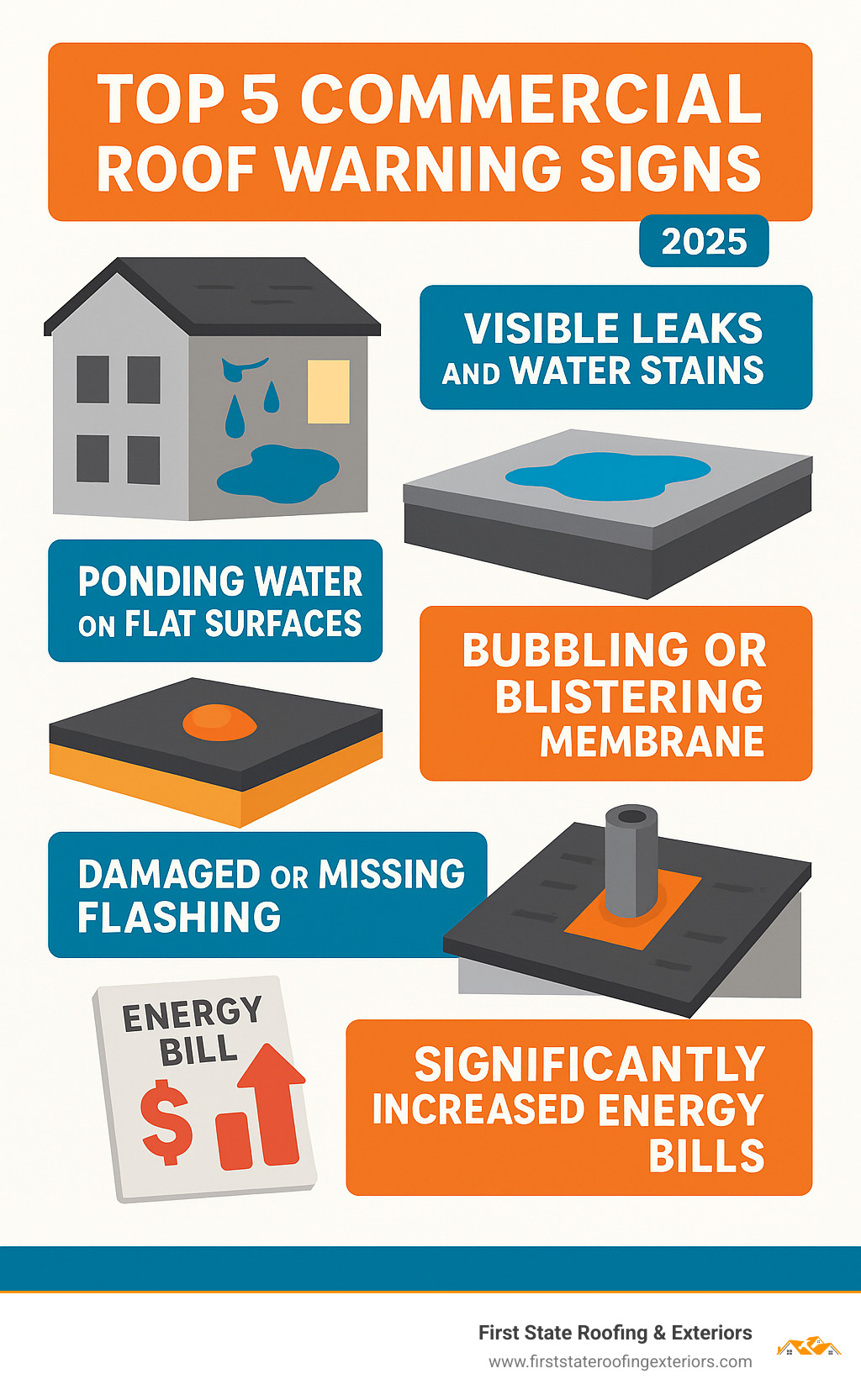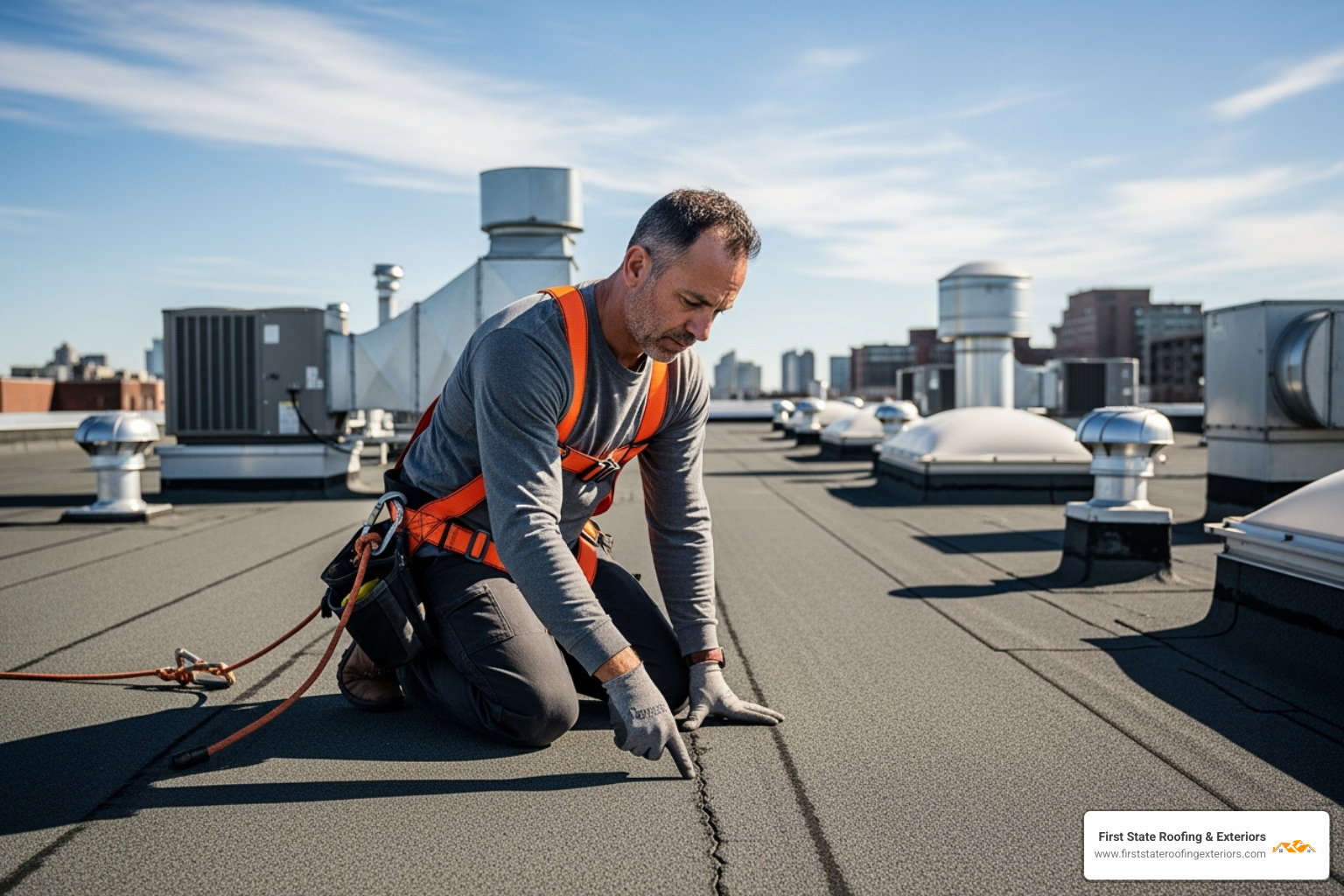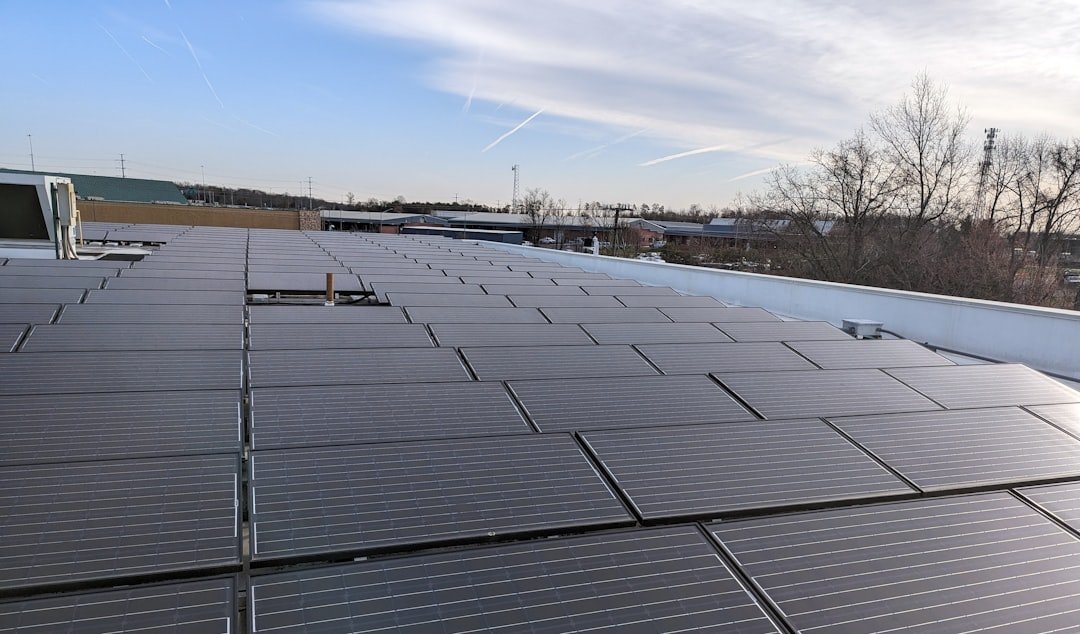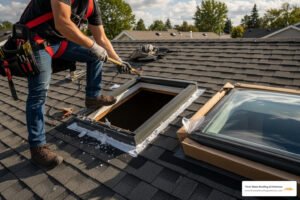Why Commercial Roofing Maintenance Protects Your Business Investment
Roofing and roof repairs are critical decisions that directly impact your business operations, property value, and bottom line. Whether you’re dealing with a sudden leak or planning preventative maintenance, understanding your options can save thousands in emergency costs and business disruption. Your commercial property represents a significant investment, and the roof is its primary defense against Delaware’s coastal weather, freeze-thaw cycles, and intense summer heat. Proactively managing your roofing needs with Delaware’s commercial roofing experts is a smart financial strategy, as ignoring small problems can escalate damage and reduce your roof’s lifespan significantly. The average cost of commercial roof replacement ranges from $5 to $15 per square foot, making proactive commercial roofing services a must.
Quick Guide to Commercial Roofing Services:
- Emergency Repairs: 24-48 hour response for leaks and storm damage
- Roof Replacement: Complete system installation (15-30+ year lifespan depending on material)
- Roof Restoration: Cost-effective coating systems that extend roof life by 5-15 years
- Preventative Maintenance: Bi-annual inspections and minor repairs to prevent major issues
- Material Options: TPO, EPDM, metal, and modified bitumen systems each with unique benefits
The stakes are high: A single leak can damage inventory, disrupt operations, and create liability issues. But with proper planning and the right contractor, you can protect your investment while managing costs effectively.
I’m Richard McCain, owner of First State Roofing & Exteriors, and I’ve spent over 20 years helping Delaware businesses steer complex roofing and roof repairs decisions. My hands-on experience with commercial projects across the state has taught me that informed property owners make better long-term investments.

Need help now? We give free estimates—call (302) 222-4065 for a free inspection.
Identifying the Need: Signs Your Commercial Roof Needs Attention
Your commercial roof works hard, silently protecting your business day in and day out. But like any hard worker, it needs attention. Recognizing the signs of distress early can prevent a small issue from becoming a costly catastrophe. So, what are the red flags that signal your commercial roof needs professional attention?

Look out for these common indicators:
- Visible Leaks & Interior Water Stains: This is the most obvious sign. If you see water dripping or staining on ceilings and walls, your roof is compromised. Don’t assume it’s just a small drip; water can travel far from its entry point.
- Ponding Water: After rain, if water remains on your flat roof for more than 48 hours, it’s considered ponding. This standing water accelerates material degradation and can lead to structural issues.
- Bubbling or Blistering: These raised areas on the roof membrane indicate moisture trapped beneath the surface, often due to poor adhesion or water infiltration. They weaken the roof’s integrity.
- Damaged or Missing Flashing: Flashing, the material used to seal around roof penetrations (vents, skylights, parapet walls), is a common culprit for leaks. If it’s cracked, rusted, or dislodged, water will find its way in.
- Clogged Drains: Gutters and drains are your roof’s drainage system. If they’re clogged with debris, water backs up, leading to ponding and potential leaks.
- Increased Energy Bills: A compromised roof can lose its insulating properties. If your heating or cooling costs suddenly spike, your roof might be struggling to maintain thermal efficiency.
- UV Exposure Effects & Regular Use Wear-and-Tear: Over time, intense sun and regular foot traffic can degrade materials, leading to cracking, seam separation, and accelerated aging.
Common Causes of Commercial Roof Leaks
Understanding why leaks happen is the first step in effective roofing and roof repairs. Leaks are rarely random; they’re usually a symptom of underlying issues.
Here are the most common culprits we encounter:
- Poor Installation: Unfortunately, not all roof installations are created equal. Improperly sealed seams, inadequate flashing, or incorrect material application can lead to premature failure. This is why adhering to strict installation standards, like those outlined by the National Roofing Contractors Association (NRCA), is critical for a long-lasting roof.
- Debris Buildup: Leaves, branches, and even construction debris left on the roof can trap moisture, promote organic growth, and puncture the membrane.
- Weather Damage: Delaware experiences its fair share of severe weather. Strong winds can lift and tear membranes, heavy rains can overwhelm drainage systems, and hail can cause direct punctures.
- Aged Materials: Every roofing material has a lifespan. As materials age, they become brittle, crack, and lose their protective qualities, making them susceptible to leaks.
- Punctures from Foot Traffic: Commercial roofs often see foot traffic from HVAC technicians, window cleaners, or other maintenance personnel. Each step can potentially damage the membrane, especially if proper pathways aren’t used.
- Clogged Gutters and Drains: We can’t stress this enough! Clogged drainage systems are a leading cause of leaks. They cause water to pool, putting immense pressure on the roof and eventually finding its way into your building. Regular cleaning is essential.
For a thorough assessment and to prevent issues from escalating, consider scheduling regular roof inspections.
The Impact of UV Exposure and Foot Traffic on Flat Roofs
Flat roofs are incredibly common for commercial properties, but they face unique challenges, especially from the elements and human activity. The intense summer sun, even here in Delaware, can be a silent killer for your roof.
- Material Degradation and Accelerated Aging: UV rays break down the chemical bonds in roofing membranes, making them brittle and less flexible. This leads to cracking, shrinking, and a significant reduction in the material’s lifespan. It’s like your roof getting a constant sunburn!
- Reduced Flexibility and Seam Separation: As materials degrade from UV exposure, they lose their elasticity. This makes them less able to expand and contract with temperature changes, putting stress on seams. Over time, these seams can separate, creating direct pathways for water.
- Punctures and Membrane Compression: Every step on a flat roof, especially one already compromised by UV, can cause a puncture. Repeated foot traffic in the same areas can also compress the insulation and membrane, creating low spots where water can pond.
Commercial flat roofs require professional attention due to this constant wear and tear from weather, UV exposure, and regular use. Ignoring these factors can lead to costly repairs down the line. To keep your roof in top shape, remember to read our roofing tips.
A Guide to Commercial Roofing Materials
Choosing the right material for your commercial roof is one of the most important decisions you’ll make as a property owner. Think of it like picking the perfect armor for your building – it needs to withstand Delaware’s coastal weather while fitting your budget and long-term goals.
The good news? You have several excellent options, each with its own personality and strengths. Let’s break down the most popular commercial roofing materials so you can make an informed choice for your roofing and roof repairs needs.
| Material Type | Typical Lifespan (Years) | Key Benefits | Best For |
|---|---|---|---|
| TPO | 15-25 | Energy efficient, cost-effective, lightweight | Most commercial buildings |
| EPDM | 15-25 | Excellent durability, weather resistant | Low-slope roofs |
| Metal | 20-30+ | Long-lasting, low maintenance, fire resistant | High-traffic areas |
| Modified Bitumen | 15-25 | Puncture resistant, flexible, proven performance | Traditional applications |
The beauty of modern commercial roofing is that there’s no “one size fits all” solution. Your building’s design, your budget, the local climate, and how much foot traffic your roof sees all play a role in determining the best choice.
Single-Ply Membranes (TPO & EPDM)
Single-ply membranes are like the reliable workhorses of the commercial roofing world. These materials come in large sheets that get rolled out and sealed together, creating a continuous barrier against the elements.
TPO (Thermoplastic Polyolefin) has become incredibly popular over the past decade, and for good reason. Its bright white surface reflects heat beautifully, which can significantly reduce your cooling costs during Delaware’s hot summers. TPO is also relatively affordable and lightweight, making it easier on your building’s structure. However, seam integrity is crucial – poor installation can lead to problems down the road.
EPDM (Ethylene Propylene Diene Monomer) is the veteran of single-ply systems. This black rubber membrane has been protecting commercial buildings for decades. It’s incredibly durable and handles temperature extremes like a champ. The downside? That dark color absorbs heat, which might increase your energy bills. But if durability is your top priority, EPDM rarely disappoints.
Both materials typically last 15-25 years with proper maintenance.
Metal Roofing Systems
Metal roofing brings a completely different set of advantages to the table. Standing seam metal systems are particularly popular for commercial applications because they’re built to last and require minimal maintenance once installed.
The durability factor is hard to beat – a quality metal roof can easily last 20-30+ years, sometimes even longer. They’re also excellent at shedding water and snow, which is perfect for Delaware’s varied weather patterns. Metal roofs are naturally fire-resistant and can handle heavy foot traffic without damage.
The trade-off? Higher upfront costs. Metal systems typically require a larger initial investment compared to membrane systems. However, the long-term value often makes up for the higher price tag, especially when you factor in the reduced maintenance needs and energy efficiency benefits.
If you’re considering metal for your commercial property, review guidance from the Metal Construction Association on system selection, coatings, and local environmental considerations.
Built-Up Roofing (BUR) & Modified Bitumen
These are the time-tested systems that have been protecting commercial buildings for generations. Built-up roofing uses multiple layers of tar and gravel to create what’s essentially a waterproof sandwich. It’s incredibly puncture-resistant and provides excellent protection against the elements.
Modified bitumen takes the traditional approach and gives it a modern twist. These systems can be torch-applied or cold-adhered, depending on your building’s needs and local fire codes. The material itself is more flexible than traditional BUR, which helps it handle building movement and temperature changes.
Both systems typically last 15-25 years and offer excellent value for the money. They’re particularly good choices for buildings that see regular foot traffic or have equipment mounted on the roof. The multiple layers provide redundancy – if one layer gets damaged, you still have protection underneath.
The key with these systems is proper installation and regular maintenance. When done right, they provide decades of reliable service. When done wrong, they can be problematic. That’s why choosing an experienced contractor is especially important with these traditional systems.




